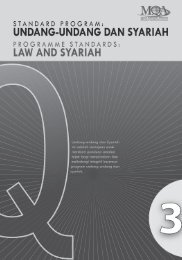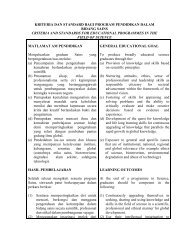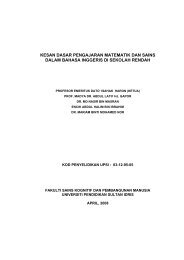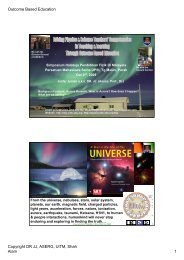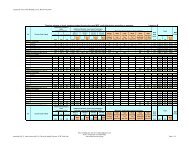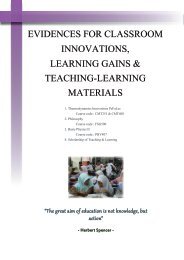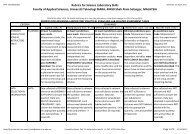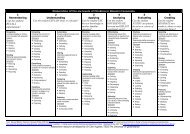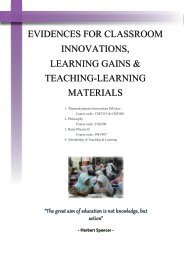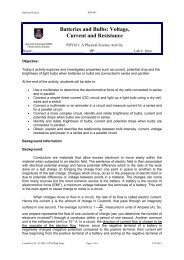OUTCOMES-BASED TEACHING AND LEARNING (OBTL) - DrJJ
OUTCOMES-BASED TEACHING AND LEARNING (OBTL) - DrJJ
OUTCOMES-BASED TEACHING AND LEARNING (OBTL) - DrJJ
You also want an ePaper? Increase the reach of your titles
YUMPU automatically turns print PDFs into web optimized ePapers that Google loves.
2<br />
<strong>OBTL</strong> in itself does not say how to align ILOs, TLAs and assessment tasks, only that they<br />
should be aligned. Constructive alignment provides the “how-to” by stating that the TLAs<br />
and the assessment tasks activate the same verbs as in the ILOs.<br />
Why use <strong>OBTL</strong><br />
The short answer is that <strong>OBTL</strong> is logical, effective and both teachers and students find it<br />
more satisfying than traditional teaching. A benefit for students, possibly even more than<br />
teachers, is that the ILOs tell them precisely not only what they are supposing to be learning,<br />
but how and to what standard.<br />
For these reasons, <strong>OBTL</strong> is used in university teaching in several countries, and in the UK<br />
and in Hong Kong also for quality assurance. It is now widely recognized that effective<br />
teaching and assessment requires an aligned system. The UGC is strongly encouraging<br />
universities to adopt <strong>OBTL</strong> in order to enhance teaching and learning.<br />
But isn’t <strong>OBTL</strong> more resource intensive<br />
At first, yes it is. The intended topics in the curriculum need to be reworked into the form of<br />
Intended Learning Outcomes, which does require time and good cooperation between course<br />
leaders and programme coordinators. The TLAs need to be thought over, and practicable<br />
changes made in the current teaching method so that students’ learning activities are more<br />
likely to lead them to achieve the ILOs. Obviously, what is practicable in a class of 40<br />
students may not be practicable in a class of 200 – but there are better ways of handling the<br />
latter than unalleviated lecturing. Assessment tasks need then to be redefined and grading<br />
criteria (rubrics) worked out by colleagues. The main difficulty here is a change in mindset,<br />
rather than resource-demanding activities.<br />
Initially, setting up <strong>OBTL</strong> takes time, but once <strong>OBTL</strong> is up and running there should be little<br />
difference in teacher time between this and “the old way”.<br />
Doesn’t <strong>OBTL</strong> atomise the curriculum into independent low level competencies, making<br />
higher level outcomes unattainable<br />
Definitely not. Competency-based assessment as used in vocational courses may look similar<br />
superficially, but <strong>OBTL</strong> is quite different. Competency-based assessment is skill-based,<br />
whereas the outcomes in <strong>OBTL</strong> are what you decide them to be, as high level as you can<br />
reasonably expect. Outcomes with verbs such as “apply to unfamiliar contexts”, “invent”,<br />
“generate”, “create” and so on are obviously not trivial.<br />
<strong>OBTL</strong> requires a major rethink of university assessment methods.<br />
Yes, it does! To be maximally effective, <strong>OBTL</strong> requires a change from a quantitative and<br />
analytic mindset, that does atomise knowledge into marks, to one that uses and grades<br />
assessment tasks qualitatively and holistically wherever possible. High level outcomes,<br />
academic or professional, refer to whole acts, not to the independent components of those<br />
acts. Assessing the components of a task is very helpful in providing feedback to students,




